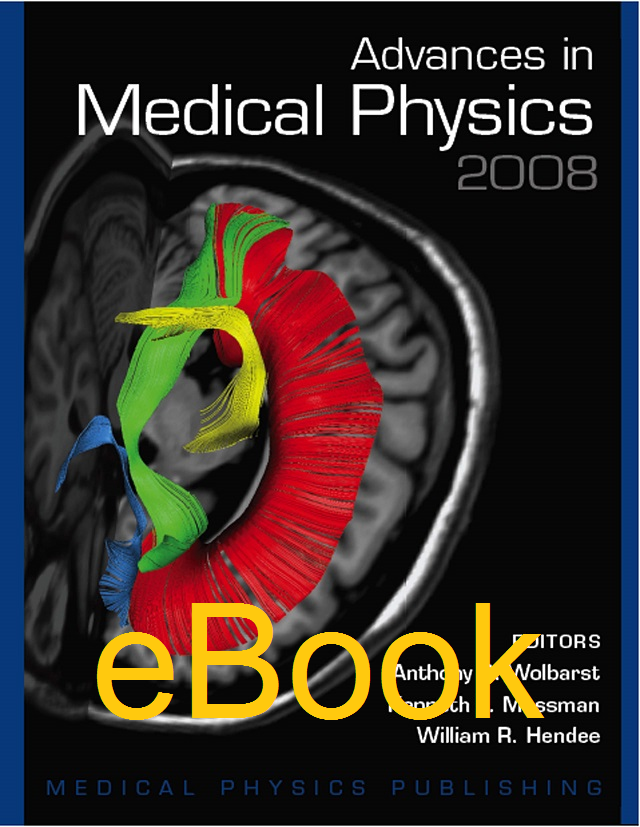
Advances in Medical Physics: 2008
Author: Anthony B. Wolbarst, Kenneth L. Mossman, and William R. HendeeISBN: 9781930524781
Published: 2008 | 368 pp. | eBook
Price: $ 94.00
Australasian Physical & Engineering Sciences in Medicine, Vol. 32 | Number 1, 2009
This is the second book in a biennial series entitled "Advances in Medical Physics" designed to provide the latest updates on developments in medical radiation technology and science to medical physicists, technologists and physicians keen on technical aspects of imaging and radiotherapy as well as to other interested professionals and students. The invited authors of individual chapters include eminent medical physicists, experts in the respective fields, including J.A. Siebert, E. Samei, W. Hendee and others.
While the first volume of this new series provided an up-to-date background on the principal areas of radiotherapy and imaging physics, the current volume concentrates primarily on the recent advances in these areas. The book contains 18 rather diverse topics in diagnostic imaging, radiation therapy and radiation protection, ranging from digital mammography and fluoroscopy, CT doses and CT quality control, advances in quantitative MRI, a brief overview of image reconstruction algorithms to image-guided radiation therapy, stereotactic radiosurgery, mathematical treatment planning optimization and even insights to statistical modelling or recent changes in NRC regulations.
More "exotic" topics of pioneering orientation and discussions on exciting new technologies include molecular imaging (for example, quantum dot physics that utilizes semiconductor nanocrystals that have promising applications in biological labelling and could serve as microprobes for detection and diagnosis), statistical learning machines and their application in Computer-Aided Diagnosis (CAD), to our understanding of health risks of exposures to low doses of ionizing radiations. Recent radiobiological studies suggest that the biophysical mechanisms at small doses are increasingly complex and radiation dose may not be an accurate predictor of risk. This is in particularly important because of the potential public health consequences of medical imaging. The last chapter of the book provides an overview of the NIH grant process (including advice on how to improve the application's appeal and information about what the grant reviewers look for), to complete the broad range of subjects.
The articles expect an understanding at a graduate student level. Description is basic and not too complex mathematically, aiming to provide general information without too much rigorous calculus. A number of the chapters should be of general interest to a wide medical physics readership. Chapters are short (10-20 pages) and to the point; the number of specific topics selected as well as the depth of information are restricted. Relevant references are, however, provided for further reading if interested. Where applicable, the book also addresses QA related issues. The latest hardware developments including tomotherapy, cyberknife (and its accuracy), rotational therapy and associated issues such as narrow beam dosimetry and suitable radiation detectors, and plan optimization are briefly discussed. A short summary of the radiotherapy bunker design as presented in the NCRP report no. 51 will be found useful by medical physics registrars for their TEAP training. The chapter explains basic approaches to primary and secondary barriers and doors for mazes and even maze-less rooms. Basic mathematics and examples are provided along with essential data tables.
Overall, the articles are well written and provide a timely assessment of what is happening in medical physics subspecialties and for those looking for a quick overview, the chapters should provide concise summaries of current trends as well as future directions of novel technologies that are undergoing rapid development.
Eva Bezak
Department of Medical Physics
Royal Adelaide Hospital


